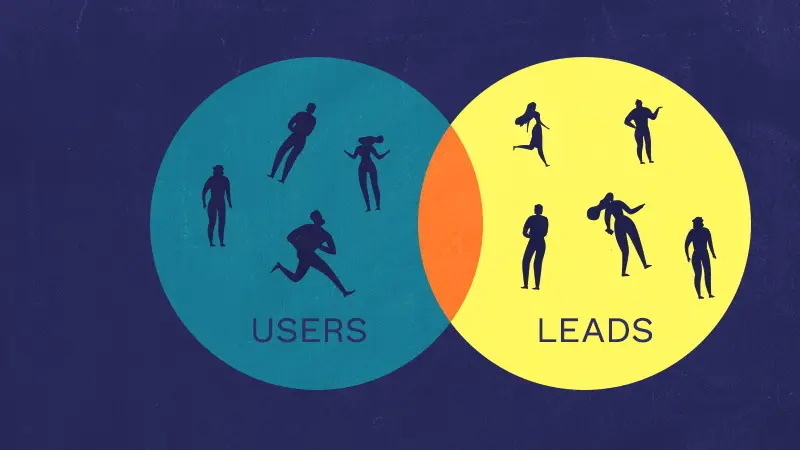Marketing automation is the solution for SaaS marketers and entrepreneurs who want to make their lives simpler.
Marketing automation is meant to take care of “the majority of the work,” allowing you to focus on the essential aspects of your business. Simply said, SaaS marketing automation allows you to generate leads, nurture those leads so they’re ready for a trial or demo, improve trial conversion, track lead-flow and analytics, and execute the customer journey, all while putting a lot of it on autopilot.
Operating a SaaS company, you already know that, so in today’s post we want to put the spotlight more on how marketing automation can help drive more leads, improve conversions, and grow your SaaS company.
Onboard New Users
Every process has a set of steps that must be followed in order to be completed. Many processes, on the other hand, are clogged with time-consuming, error-prone, and costly manual operations. It’s like tossing a few rocks into your dominoes row. Workflow automation removes the stumbling blocks and replaces them with a superior kinetic force that is quick, precise, and reasonably priced.

While process automation cannot completely remove human error, it can assist to minimize the chances of it occurring. Rather than worrying about forgetting to send an email or adding an out-of-date file, your staff can focus on what they do best while automating the repetitive activities.
To optimize your time and efforts, instead of manually having to send welcome emails, instructions, tagging users, and other menial tasks, you can let your marketing automation do that for you.
Qualify Prospects
Automatically assigning a quantitative value to leads to reflect their level of interest in your product or service. You may establish a score for your leads by giving points to the activities you consider the most useful, such as viewing the price page or requesting a trial. This will demonstrate how active they have been and how high their interest level is.
When you identify who and how many people regularly visit and interact with your brand, it’ll identify which prospects you should be investing your time and efforts in.
Segment Users and Leads

Consider why you’re developing a consumer segmentation plan. Consider why you’re investing time in segmentation and what you intend to gain from it.
Look over the list of frequent reasons firms segment customers. Determine which outcomes you want to achieve so that you can tailor the rest of your strategy to support you in achieving them.
It gets easier once you’ve consolidated all your data into a marketing automation platform as this will give you a better outlook from the amount of data you receive from all your channels. It’s also important to remember that your customer segmentation goals will be unique to your company – segmenting consumers isn’t a one-size-fits-all approach.
Just like with qualifying your prospects, segment your users and leads according to their lead scores, app interaction, tiers they fall under, how often they come back to your site, etc.
Automate User Notifications
Earlier we talked about the importance of automating your workflow, so is also automating your user notifications especially for urgent and important notifications such as billing, new or deprecated features, discounts, free trials, etc.
Automating important alerts is a simple procedure that may make a significant impact in the way a company operates, such as increasing company performance, assuring 100 percent visibility of essential information, enhancing customer service, and eventually decreasing financial risk. Not only does it improve the flow of your company, but it also establishes your brand presence and reputation in the eyes of your prospective customers. They will see you as a company that’s responsible and trustworthy.
Analyze App Usage

Building a distinctive app is difficult; yet, reaching out to the proper audience and engaging them with your app is much more difficult. We enjoy customized items and seek for products that best meet our requirements. In-app events enable us to discover which features are the most popular among users and so earn money from in-app purchases.
You’d want to learn all you can about your users and their behavior, which implies there should be no limit on the amount of data you gather and analyze. However, analytics services are expensive, and you’ll frequently have to limit what you track and how much you track. Following certain best practices for tracking your in-app event data, on the other hand, may help you improve the process and achieve the highest return on investment.
Marketing automation also works for monitoring all your in-app events. Program your apps in a way that it will trigger actions and messages depending on how your users interact with your app. Using the analytics on your app, determine how you can improve your product and/or service to give your prospects a better experience. Lastly, make sure that you consistently deliver appropriate personalization based on your users in-app footprints.
Conclusion
As you can see, marketing automation has more roles to play than just making your lives a little bit easier. It covers a wide range of operations in the SaaS spectrum that will actually drive in more leads and in the process grow your SaaS company further.
The article is originally published at Callbox - The Savvy Marketer Blog



